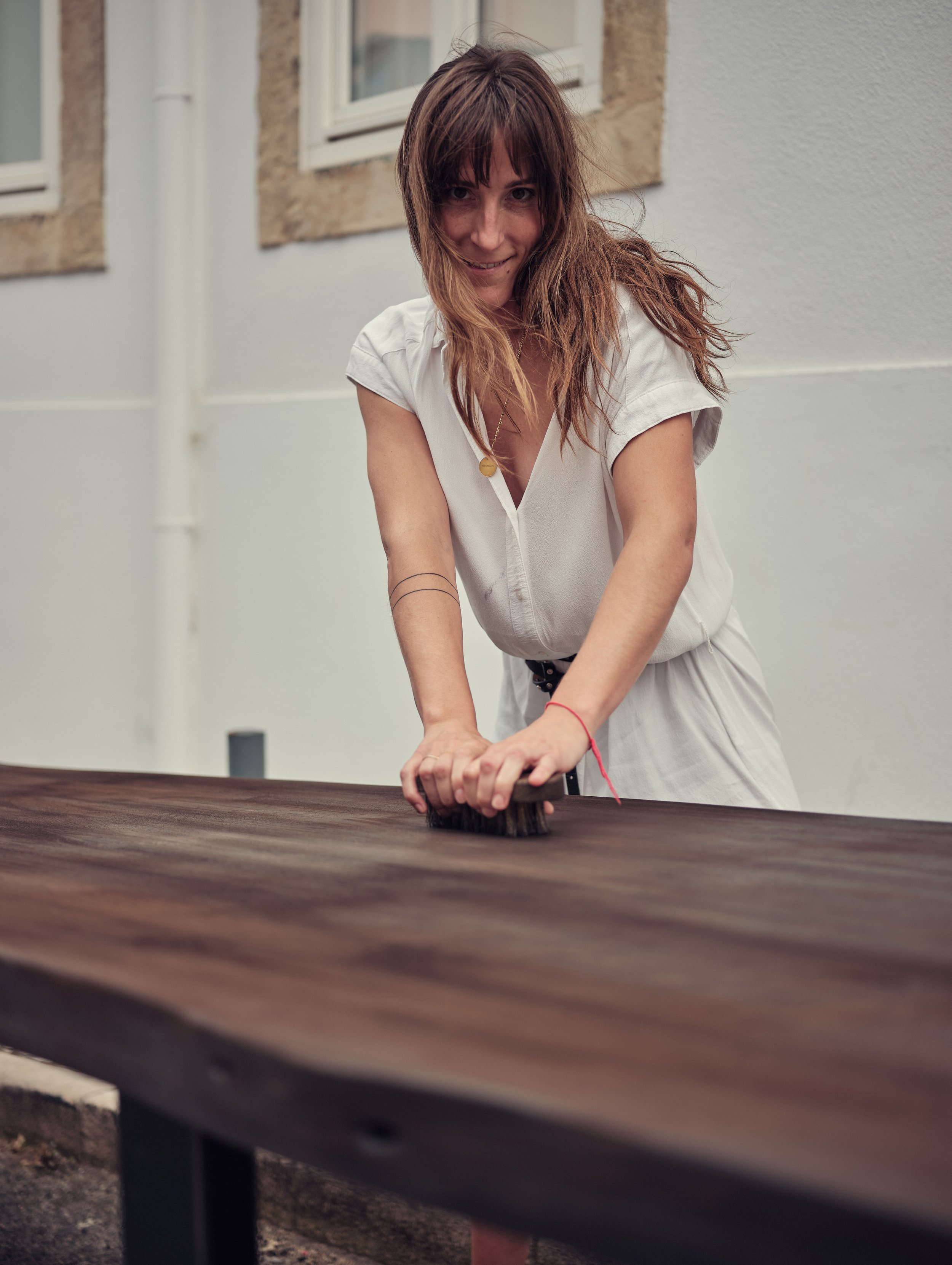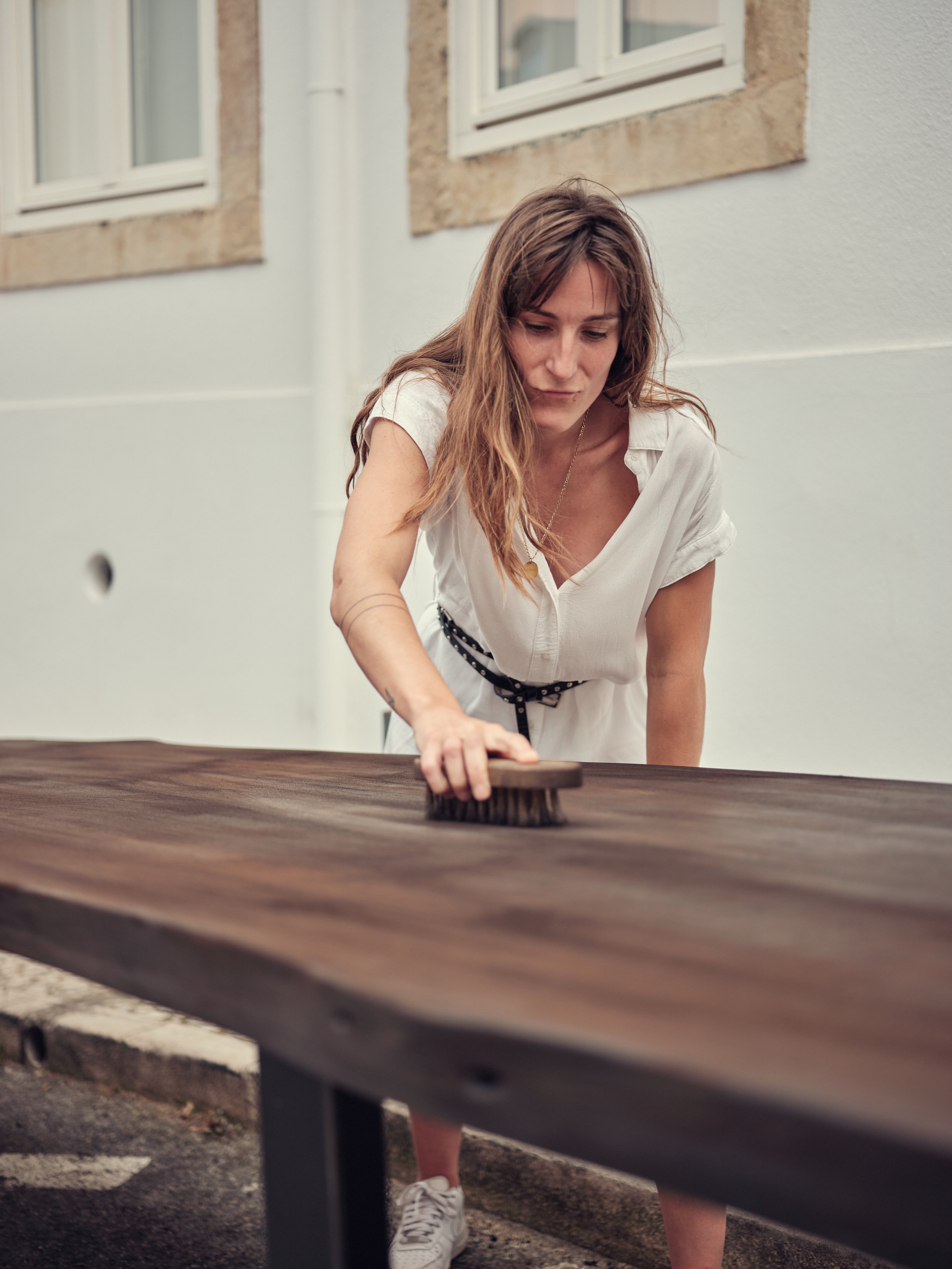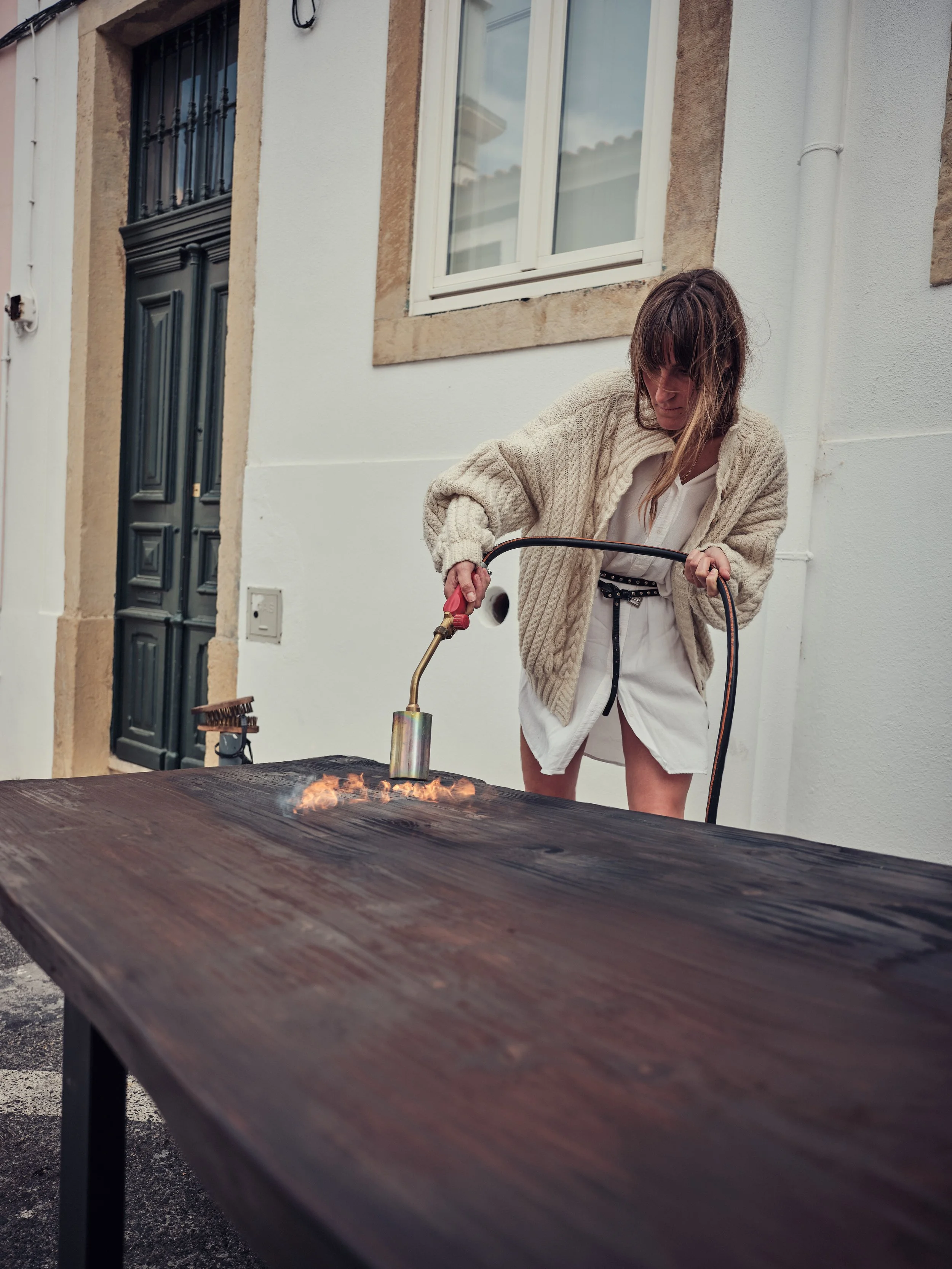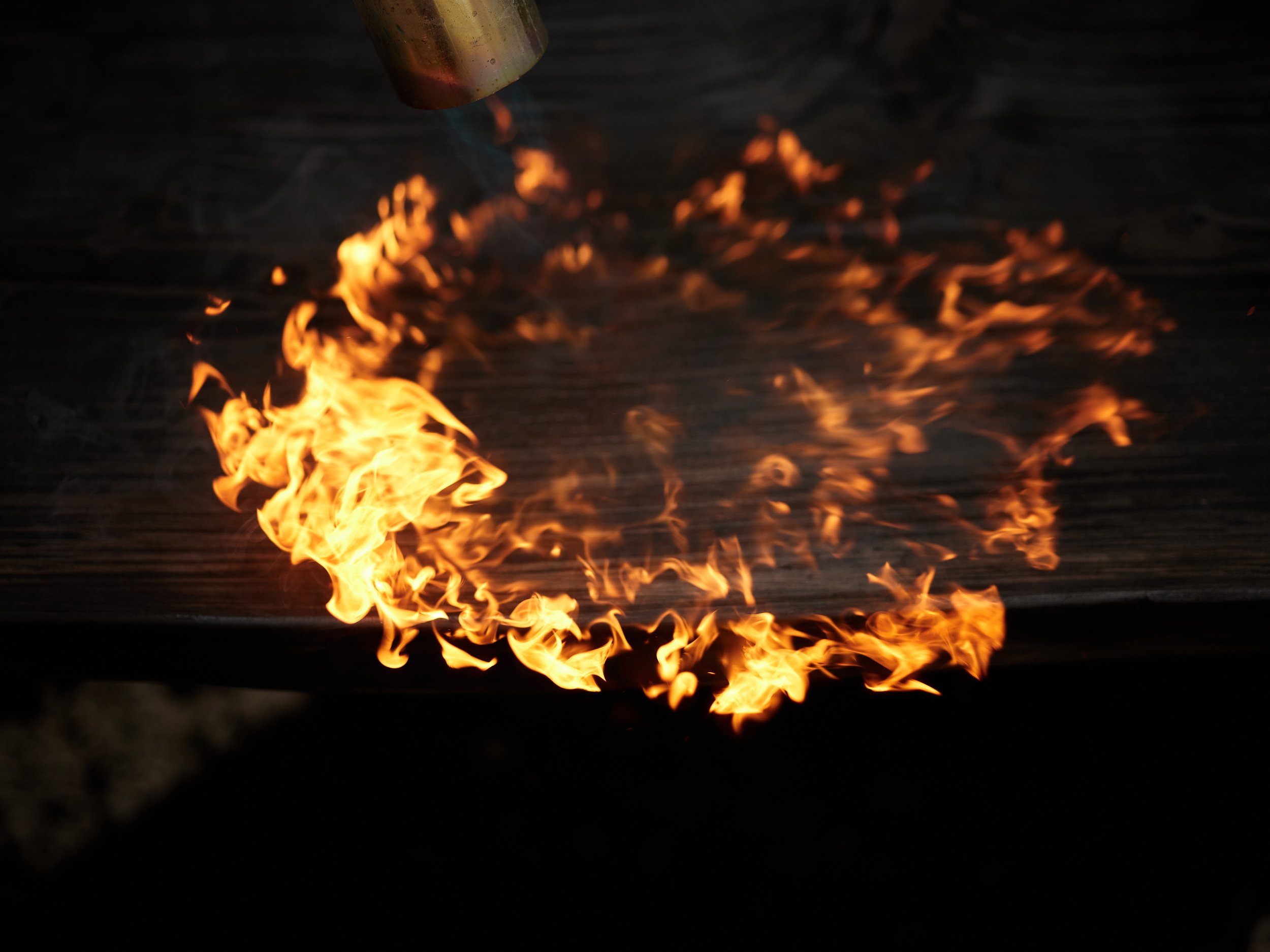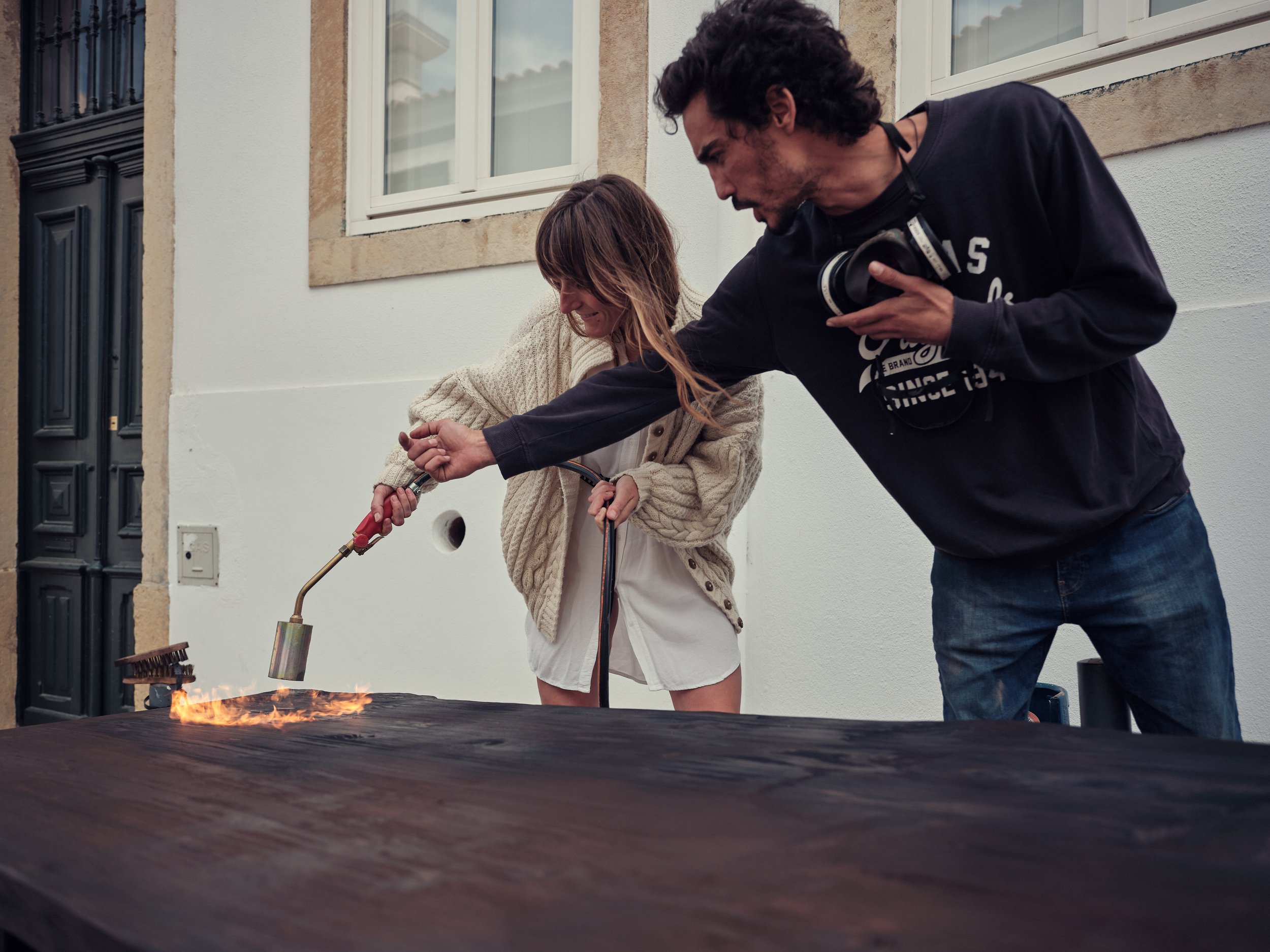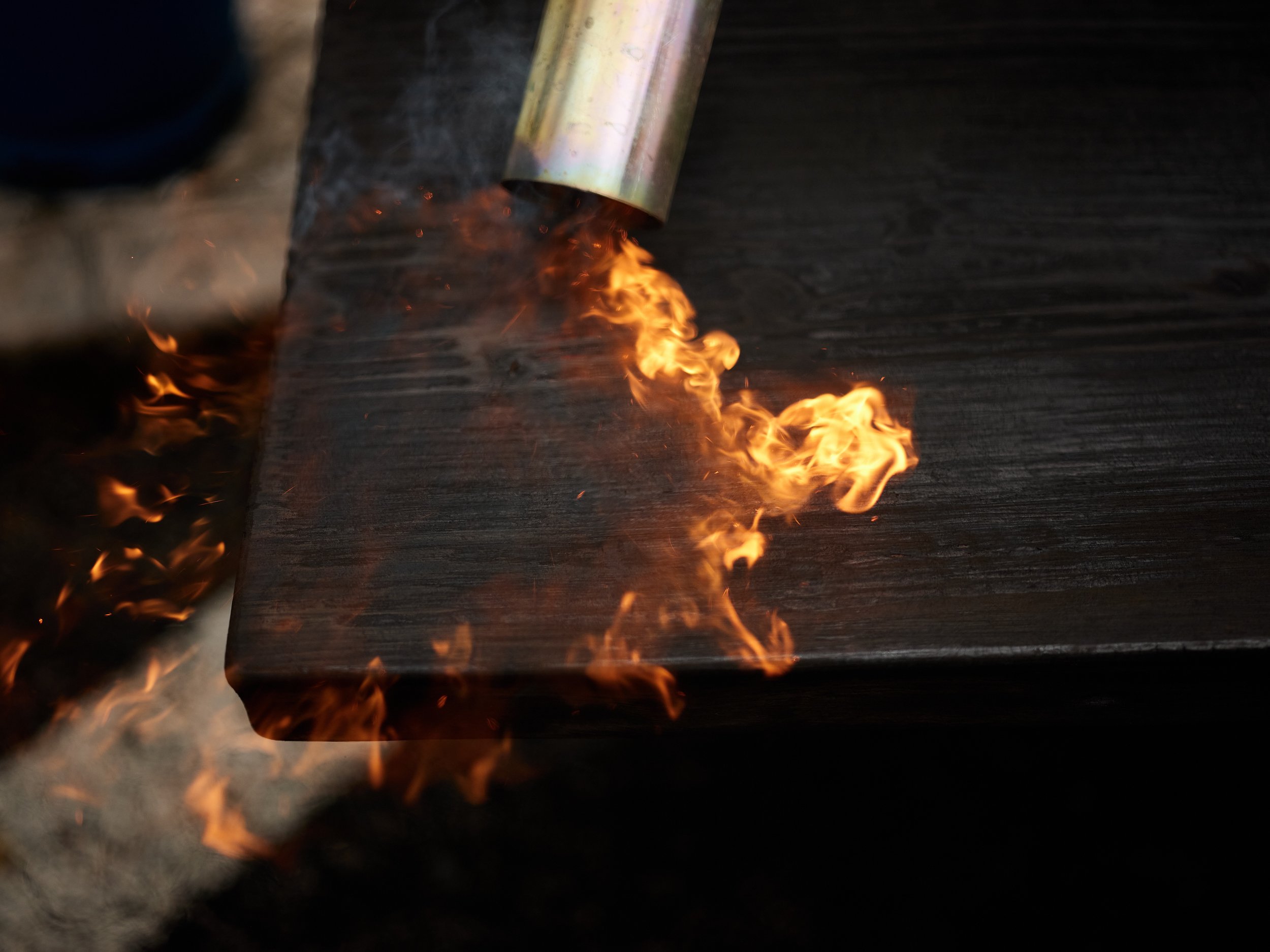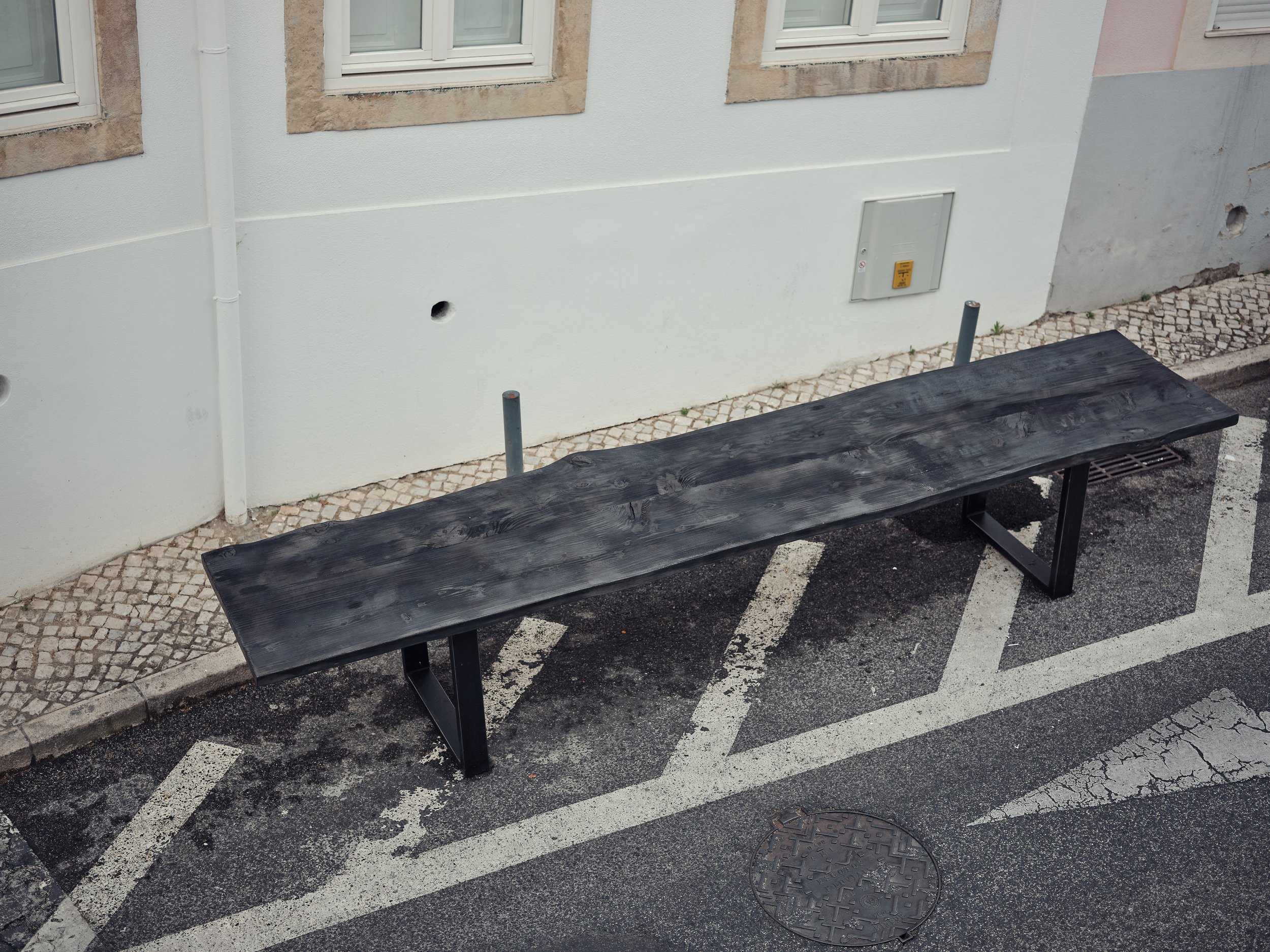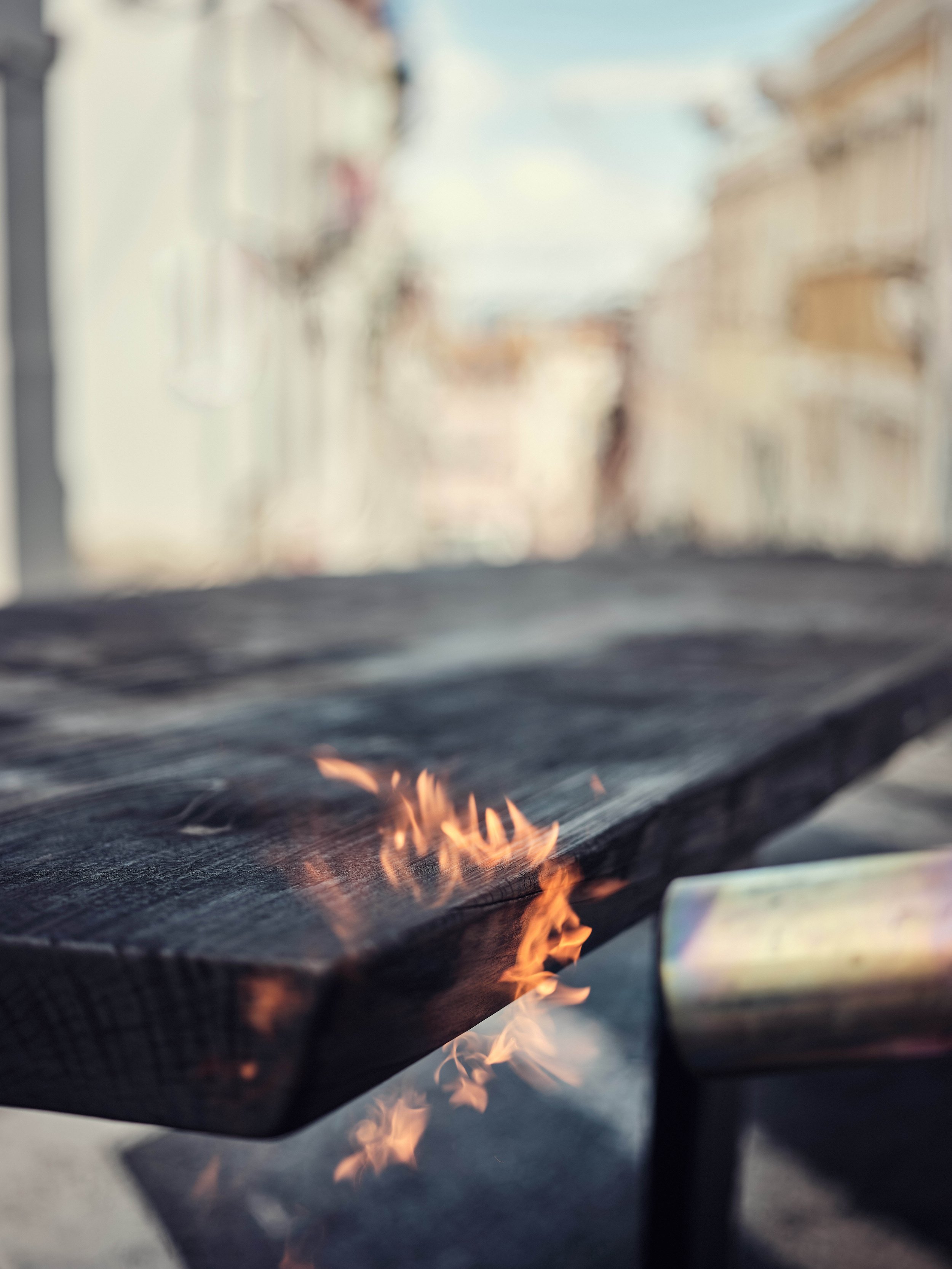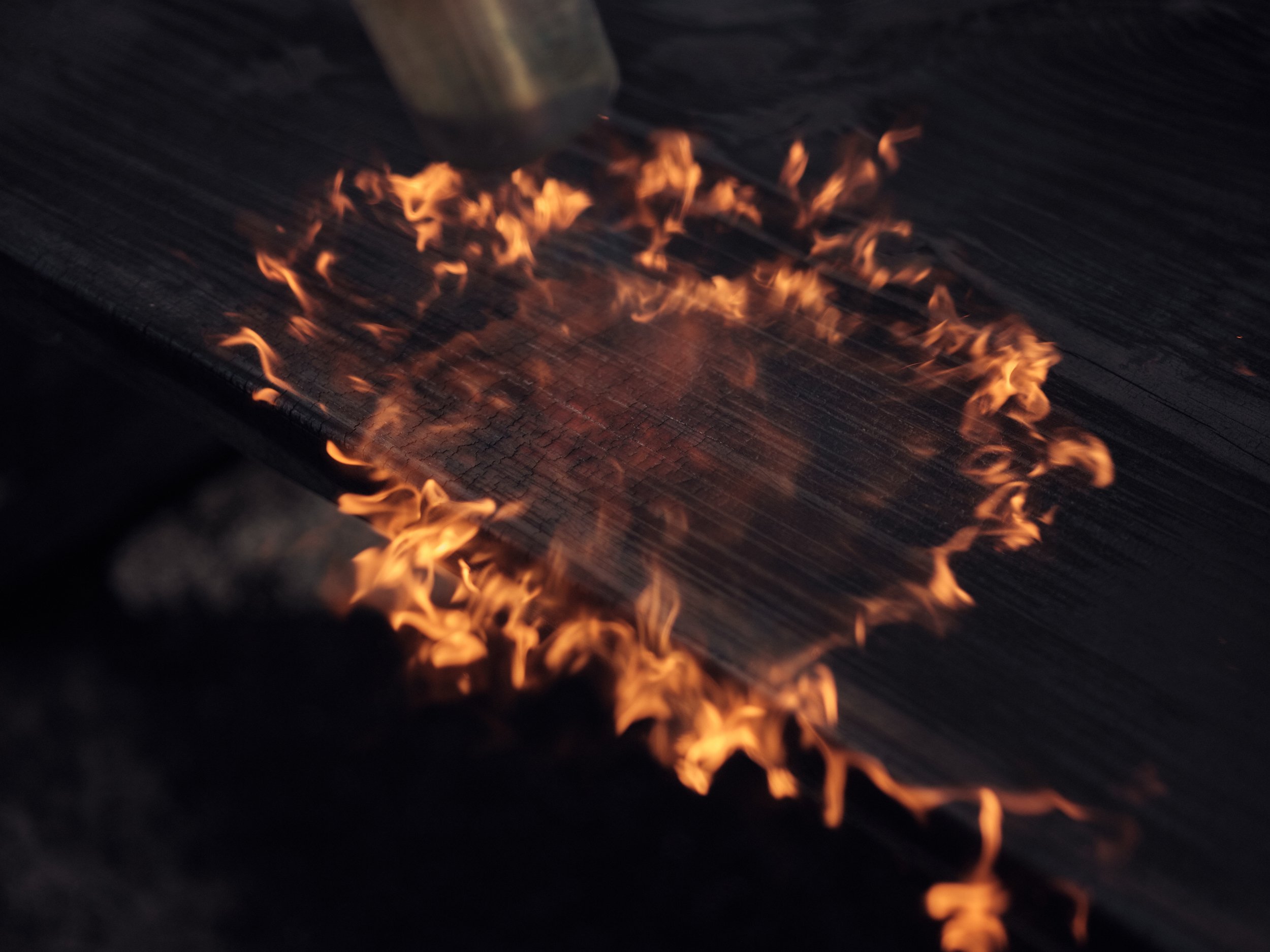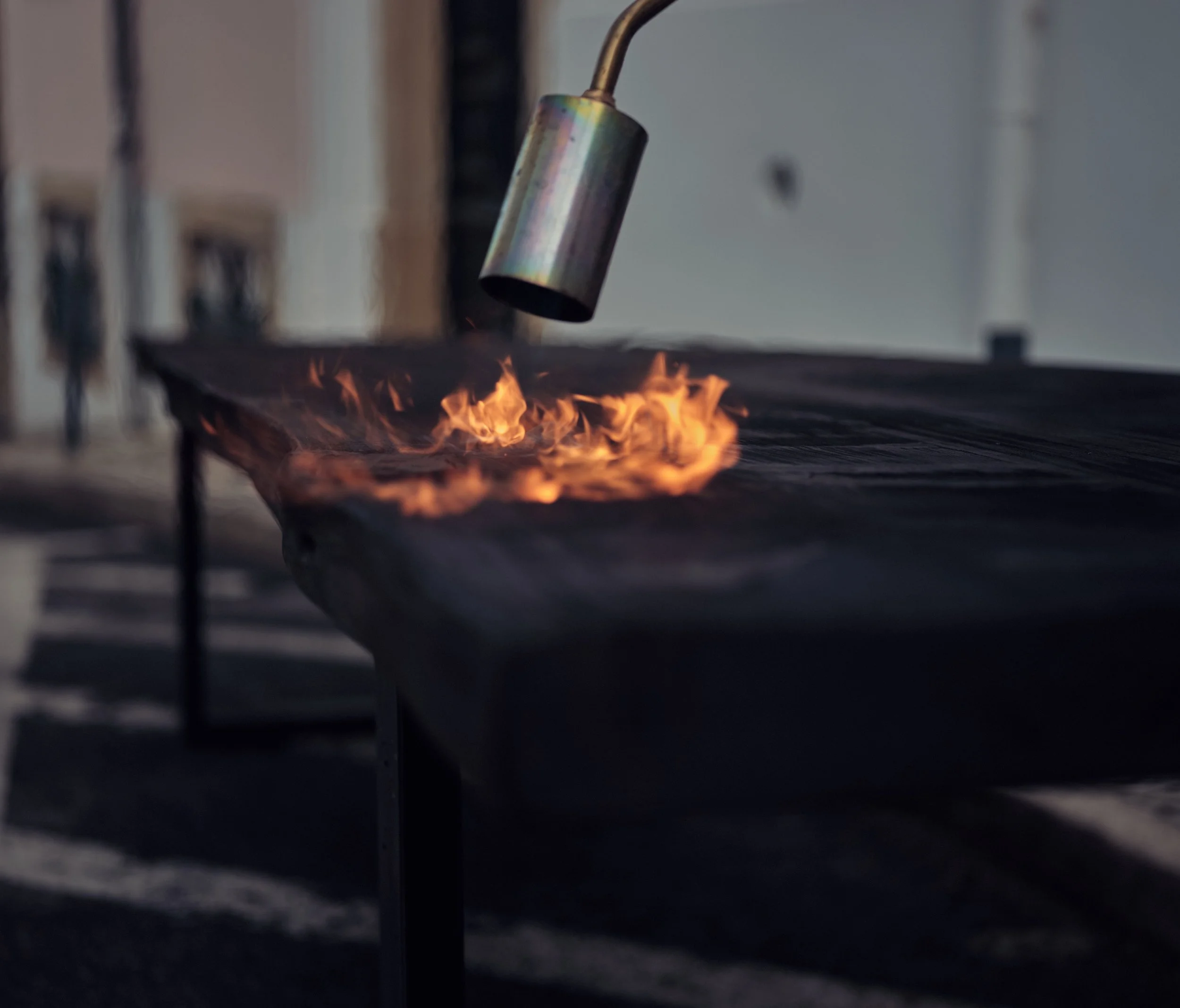YAKISUGI
In July 2021, I officially opened my private dining table, A Ilegítima, in the heart of Beato. Before it became mine, this house was meant to host a family restaurant. But life had other plans. I chose to divorce my husband, who was set to be the chef of this project, reclaiming both the house and the concept as entirely my own.
Propelled by cosmic forces and a leap of faith, I decided to open my doors to the curious, the wanderers, and the artists ready to join me on this bold new adventure. It was a space for creation, connection, and transformation.
At the center of it all stood the table—a striking four-meter-long masterpiece made to measure. However, its polished surface was coated in a color I had always disliked. It felt out of place, an echo of something I wanted to leave behind. Inspired by the need for rebirth and creative expression, we reimagined it entirely. The solution? The ancient Japanese technique of Yakisugi, or wood-burning.
Supported by the incredible artist, João Maria Bernardino, founder and designer of Apewood. This transformative process gave the table new life, adding depth, texture, and a raw, seductive energy. What had once been an object of detachment became a powerful symbol of reinvention, anchoring the space and setting the tone for the extraordinary experiences it would host.
Yakisugi, or Shou Sugi Ban, is much more than just a wood preservation technique. In this ancient Japanese art, wood is deliberately exposed to fire, undergoing an intense trial that consumes its surface without destroying it completely. This encounter with flames transforms the wood deeply, creating a layer of charcoal that not only protects it but also reveals a unique texture and essence, forever marked by this destructive element.
Through Yakisugi, the wood undergoes a symbolic death—a passage through fire that mirrors the inevitable cycle of life, death, and rebirth. This process is akin to the human soul’s journey, facing trials, losses, and pains that burn away illusions, fears, and old identities. Just as the wood becomes stronger and more resilient after the burn, we too are reborn, more authentic and grounded, after each challenge.
Here, fire, typically a force of destruction, becomes an ally in transformation. The charred wood embodies the paradox of fragility and resilience. In the darkness of its burned surface, a raw and unbroken beauty emerges, carrying the memory of having passed through flames. This practice invites reflection on our own ability to transcend suffering and be reborn, finding strength and serenity within the scars we carry.
Each Yakisugi plank is a unique work of art, a silent testimony to the cycle of destruction and regeneration. It reminds us that the death of a part of ourselves is often the key to revealing a new facet, deeper and stronger, ready to embrace the world with renewed presence.

